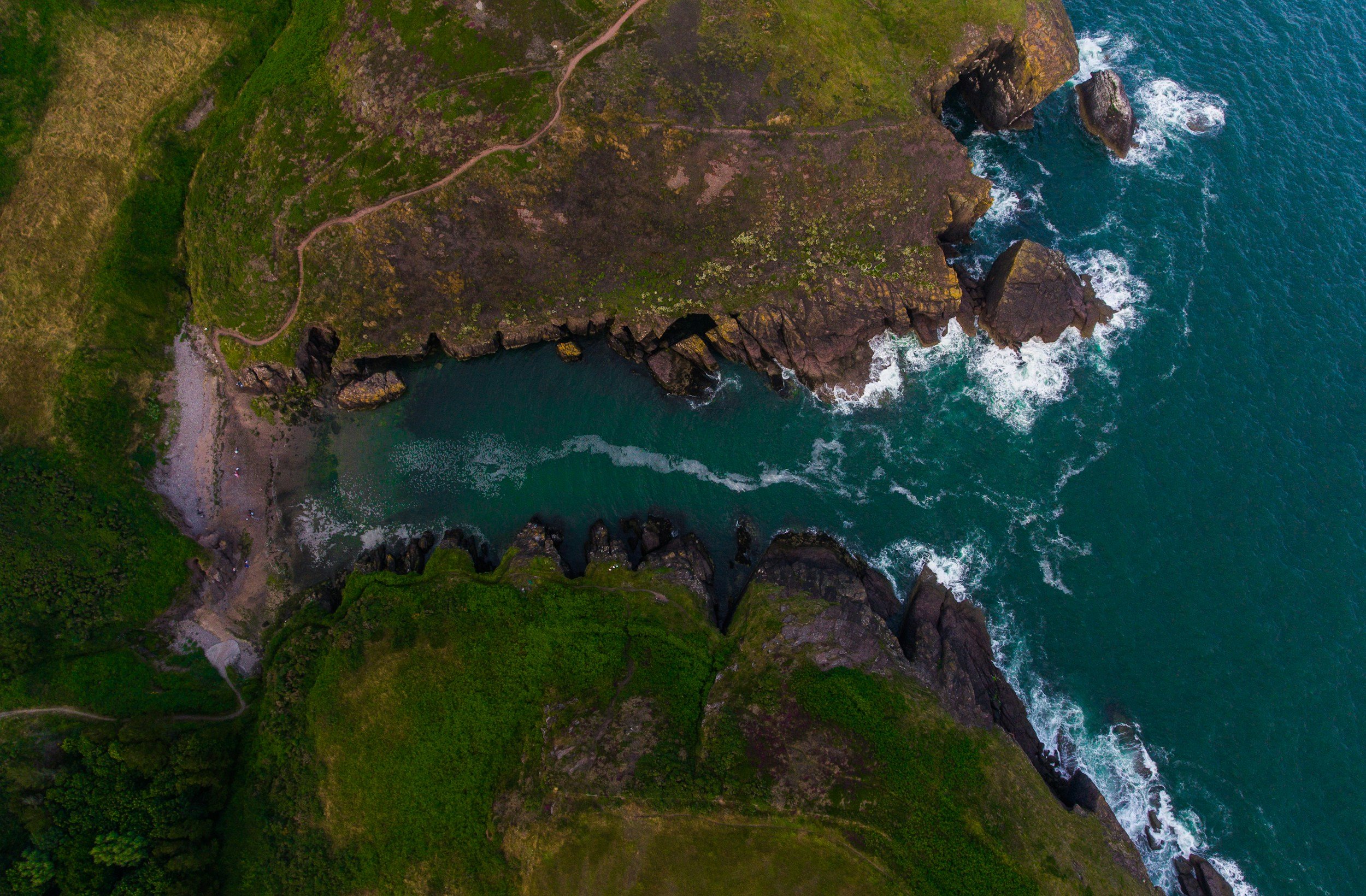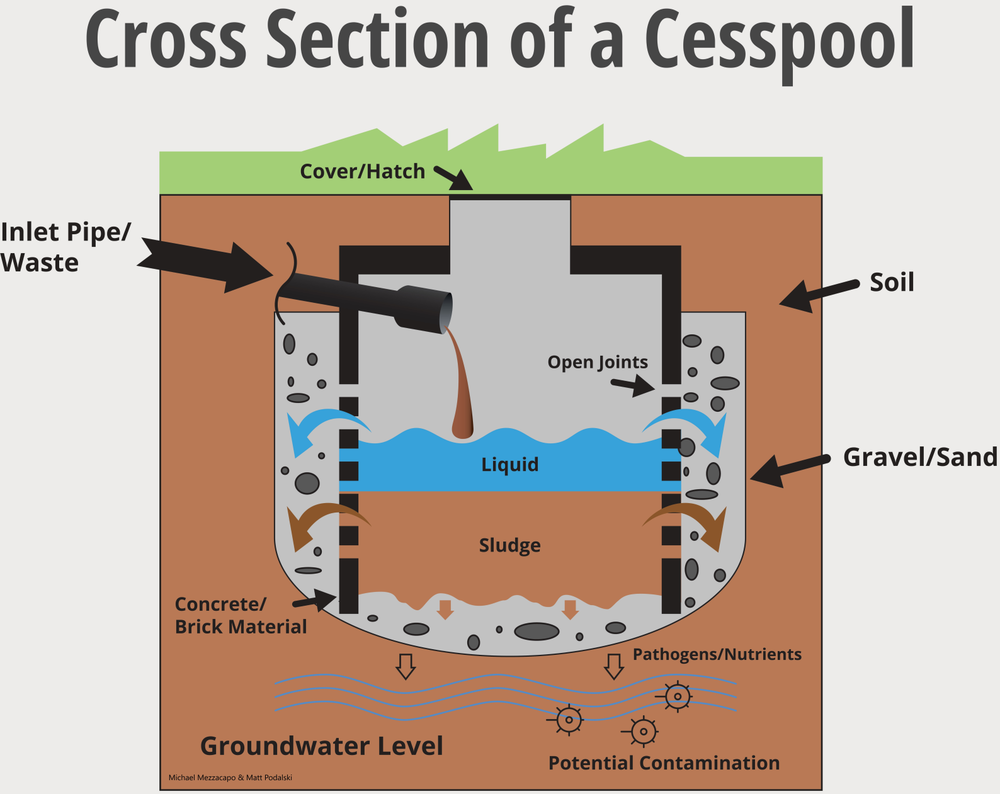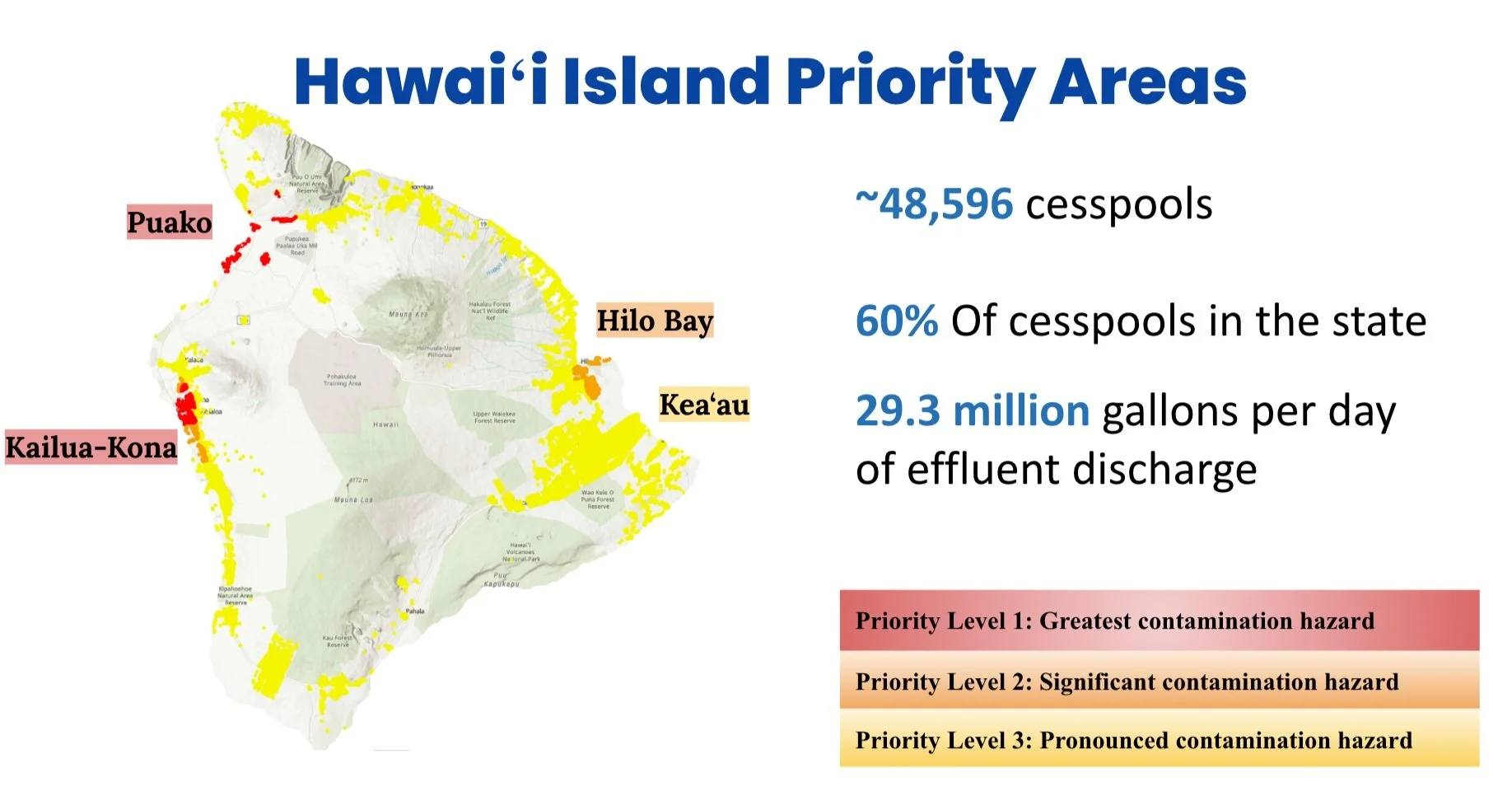
Cesspool Conversion Guide
Technical Assistance for the Cesspool Conversion Process
This page aims to provide a step-by-step guide for homeowners in Hawaiʻi looking to convert their cesspools or install an Individual Wastewater System (IWS).
It covers the approval process, from hiring a licensed civil engineer to final compliance with the Hawaiʻi Wastewater Branch. You'll find key information on system options, site evaluations, wastewater treatment methods, and contractor requirements.
Additionally, the page offers resources on assessing wastewater capacity, environmental considerations, and connecting to existing sewer lines. Whether you're starting the process or exploring your options, this guide will help you navigate wastewater system installation and compliance in Hawaiʻi.
Are you a Hawaiʻi homeowner looking to convert a cesspool? Here are the steps to obtain approval for an Individual Wastewater System (IWS) in Hawaiʻi
Hire a Hawaiʻi-licensed Civil Engineer
Site Assessment & System Selection
Choose Your IWS System & Submit Plans for Approval
Engineer and Homeowner will Hire a Hawaiʻi-licensed contractor
IWS Construction & Compliance
What is the best individual wastewater system for your property?
Step One (Hire a Hawaiʻi-licensed Civil Engineer)
Hire a Hawaiʻi licensed civil engineer to help you develop a plan for an IWS. An IWS is typically either a septic or aerobic treatment unit system. To ensure an engineer is a licensed civil engineer, use the Department of Commerce and Consumer Affairs’s (DCCA) Professional Vocational Licensing Search Tool. Alternatively, the DOH also have provided a list of licensed civil engineers that prepare IWS plans in the State of Hawaii and it is provided below:
Wastewater Alternatives and Innovations Preferred Licensed Wastewater Engineers
If you are an Individual Wastewater System (IWS) installer and would like to be featured on this website, use the button below.
Step Two (Site Assessment & System Selection)
Your licensed civil engineer will assess your property to determine the most suitable IWS. This includes evaluating soil conditions, water table levels, lot size and layout, and proximity to water sources.
Based on the site assessment, your engineer will help you decide between a septic system, aerobic treatment unit or another alternative system. The engineer will ensure the selected system complies with state regulations and meets your property's needs.
Step Three (Submit Plans for Approval)
Your licensed engineer will submit plans to the Wastewater Branch and county officials for review and approval. Plans may be submitted online by your engineer to wastewater.ehawaii.gov. Below are a list items that need to be submitted with the IWS plans.
Application Form
Owner’s Certification Form
Site Evaluation Form
Step Four (Engineer and Homeowner will Hire a Hawaiʻi-licensed contractor)
After plans are approved, homeowners can work with the engineers to hire a licensed contractor holding an A ‘General Engineering Contractor’, C-9 ‘Cesspool’, C-37 ‘Sewer and Drain line’, or C-43 ‘Sewer, Sewage Disposal, Drain and Pipe Laying’ license. This can be checked by using the DCCA’s Professional Vocational Licensing Search Tool to find the contractor’s record, check the License Class, and then the License’s status.
Step Five (Construction & Compliance)
Your licensed civil engineer will oversee the IWS construction to ensure compliance. Upon completion, they are required to submit a Final Construction Inspection Report and a Contractor Certification Form to the Wastewater Branch. If there are no discrepancies, the Wastewater Branch will issue an approval-to-use letter to your engineer. Final approval cannot be granted unless both forms are submitted. Without this approval, your IWS will be considered non-compliant.
Should you have questions with this process, please email your questions to doh.wwb@doh.hawaii.gov or info@waicleanwater.org.
Things to Consider in Converting a Cesspool
What Can a Cesspool Be Converted To? While IWS’s consisting of a septic tank and a leach field are common, they may not be the best option available depending on your location and conditions. More advanced systems can treat waste more effectively and reduce pollution. Learn more at the US Environmental Protection Agency: Types of Septic Systems. For further information, visit What to Expect in Designing your Wastewater Treatment System and NOWRA’s Onsite Wastewater Treatment System.
Assess Household Wastewater Capacity - A cesspool serving the equivalent of more than five (5) bedrooms is considered a Large-Capacity Cesspool (LCC) with more rules. More info at US Environmental Protection Agency: Large-Capacity Cesspools
Proximity to the Ocean - If your home is within 1,000 feet of drinking water well, 50 feet from the ocean, converting your cesspool is essential to protect groundwater and marine ecosystems from pollution. Therefore it may require higher treatment standards as well to ensure leaching into these environments. Consult with your licensed engineer to determine the best options for your property.
Availability to Connect to Existing Sewer - To determine if your Hawaiʻi property can connect to existing sewer lines, contact your county’s Wastewater Division for sewer maps and service area details. A licensed civil engineer can assess feasibility, including distance, elevation, and infrastructure needs. If eligible, you’ll need a sewer connection permit, and a contractor will handle installation. The county will inspect the connection before granting final approval. Check with Honolulu, Maui, Hawaiʻi, or Kauaʻi Wastewater Divisions for specific requirements.
Financing Options for Homeowners Converting Cesspools - Check out our financial resources and see if you are eligible for any funding opportunities to support your cesspool conversion.
What are cesspools, and why do they need to be converted?
A cesspool is a hole in the ground receiving untreated wastewater. Cesspools pollute the environment and endanger public health.
More info at Hawaii Department of Health: Cesspools in Hawaii
Are all cesspools equally harmful as each other?
Not all cesspools are equally harmful as they can vary in size and the volume of waste they handle. Additionally, the location of the cesspool, the type of waste that is disposed of, and the surrounding soil conditions can also affect the level of harm.
A cesspool that is located near a water source or in an area with high water table could be more harmful than one that is located farther away or in an area with a lower water table.
Graphic by Michael Mezzacapo
The Department of Health’s List of Priority Areas
Where the cesspools are qualified as especially harmful.
Map of Cesspool Locations in Hawaiʻi
Click on the map to see an interactive map based on a number of studies by University of Hawaiʻi and the Department of Health. You can enter any address into the search bar to move the map there. If there is an orange dot at the location you entered, this property is likely served by a cesspool. If the map area is shaded in blue, it is located in one of the cesspool upgrade priority areas as defined by the Hawaiʻi Department of Health. The priority areas will be updated soon. Research is ongoing to better identify properties that are most likely served by cesspools.
Note: Cesspool locations and priority areas are subject to change. Hawaiʻi lacks a complete map of all cesspool locations.









